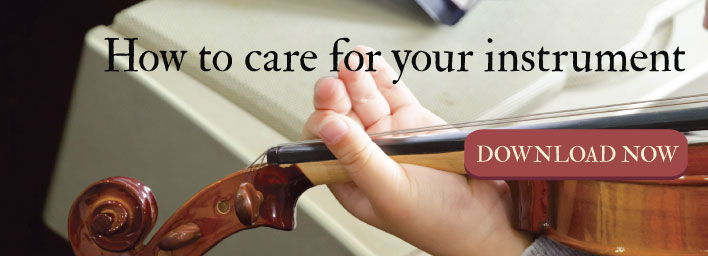Frequent Violin Tuning? Maybe It's Your Pegs

Every violinist knows that tuning your instrument to the correct pitch is an important part of each practice and playing session. If you play on a violin that is out of tune, the music won’t sound right; and if you’re performing with a group, one out-of-tune member can spoil the whole ensemble. Therefore, learning the proper tuning technique is generally one of the first skills new students need to master.
However, what if your violin requires frequent tunings? Rather than just needing an initial tweak before playing, your strings lose tension so often that you spend most of your time hunched over your chromatic tuner trying to correct them. This type of situation can be a huge impairment, especially for beginners who need the encouragement that comes from continuous progress. To solve it, you’ll have to ascertain what’s causing the problem; it may be your tuning pegs.
How frequent is too frequent?
Firstly, you’ll need to gauge the frequency of how often you’re required to perform violin tuning. Since no two instruments perform exactly the same, there are some basic criteria that you can use to make this judgement.
- Although you play your violin every day, the strings are out of tune by at least one or two steps on the scale. Meaning that each time you tune your violin, you have to bring the pitch up by more than one note. At most, you shouldn’t need to make more than sharp or flat adjustments if you’re playing regularly.
- Violin tuning is required during practice. Unless you are playing with gut strings or are playing in a very hot, humid environment, this is indicative of a problem.
- Your violin hasn’t been serviced in a while. Occasionally, pegs will slip because they’ve lost friction from use (normal), or they’ll stick because of temperature changes that have caused them to expand.
Although steel and gut strings require more tuning than perlon core ones, any of these situations can make practicing very difficult.
Troubleshooting
To determine whether or not your pegs are responsible for your frequent violin tuning, you’ll need to eliminate other factors that could also be the culprit.
- How old are your strings? If you’ve been playing with the same set of strings for more than six to eight months, you may first want to try replacing them. Older strings lose their resistance, and consequently, their ability to stay in tune.
- Are your strings installed properly? Many times pegs are blamed unjustly. One of the most common problems experienced by even professional violinists is an incorrectly strung instrument. If the strings aren’t installed properly, you will deal with constant peg problems. And although you can use peg dope or drops, basically, that’s like putting duct tape on a broken water pipe. Sure, it will fix the issue temporarily, but the problem will remain.
- Has there been (or are there) frequent weather fluctuations? Don’t immediately assume that you have a problem with your pegs unless all other things are equal. Since your violin is crafted from organic materials, changes in humidity and temperature cause it to expand and contract, which will impact the tension on your strings. Five or ten minutes in the severe cold followed by an immediately warm room will mean regular violin tuning, which is normal.
Peg Issues
Sometimes, frequent violin tuning is caused by your pegs. So, you’ll either need to have them refitted by your local stringed instrument dealer or you’ll need a method that will offer immediate help.
- Slipping Pegs: Pegs slip because they aren’t fitting tightly enough. Over time, the natural rubbing polishes the peg, making it difficult to achieve a good hold. Remember, your strings (and consequently the pegs) are under extreme pressure. If you are confident stringing your instrument, you can solve this issue by gently buffing any glossy-looking areas on the peg with triple zero steel wool (less than $5 at any hardware store) to remove the shine. However, peg compound (or “dope”) is also a quick alternative.
- Pegs Stick: You shouldn’t need to jam the peg into the box to create a good hold. Pegs normally stick because they are pushed in too far or humidity has caused them to swell; you can try gently backing the peg out a little, using a commercial lubricant (like peg drops), or applying a little graphite pencil lead to the sides of the peg where it contacts the box.
- Fine Tuner Won’t Turn: In this case, you’ve simply wound it all the way, so you’ll need to loosen it until it’s at about the mid-range, and then re-adjust the string tension using the peg.
Understanding the issues that cause frequent violin tuning will help you develop solutions to the problem so that you can spend your time playing, rather than making continuous pitch adjustments.

